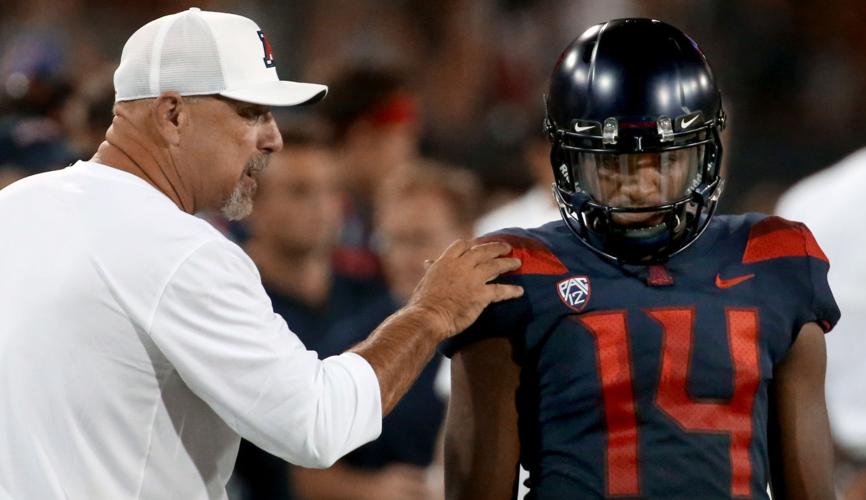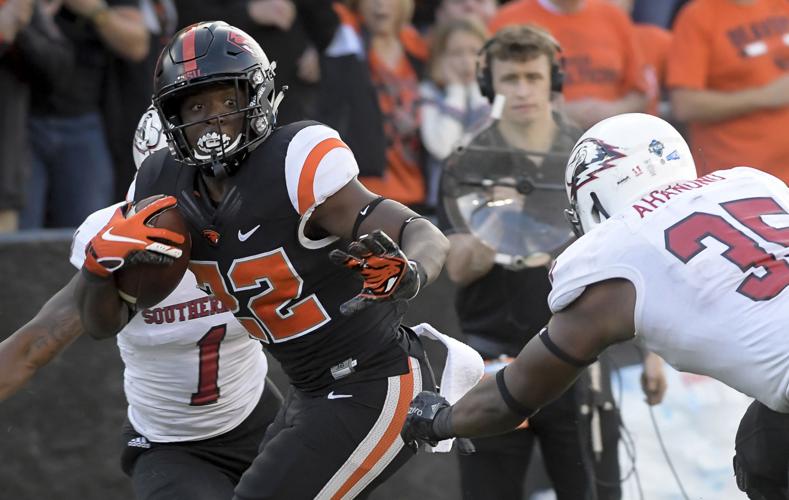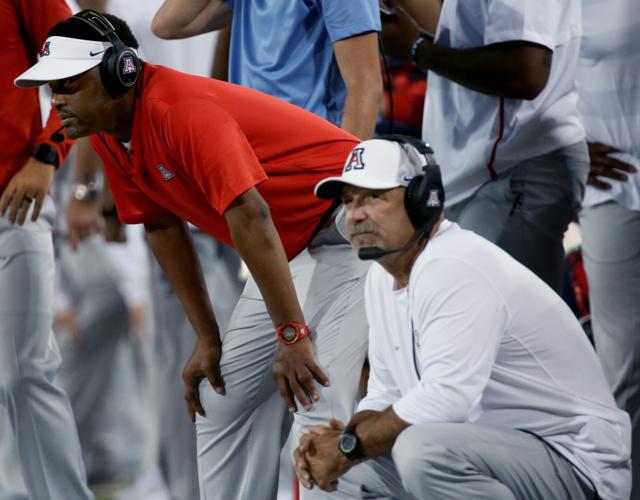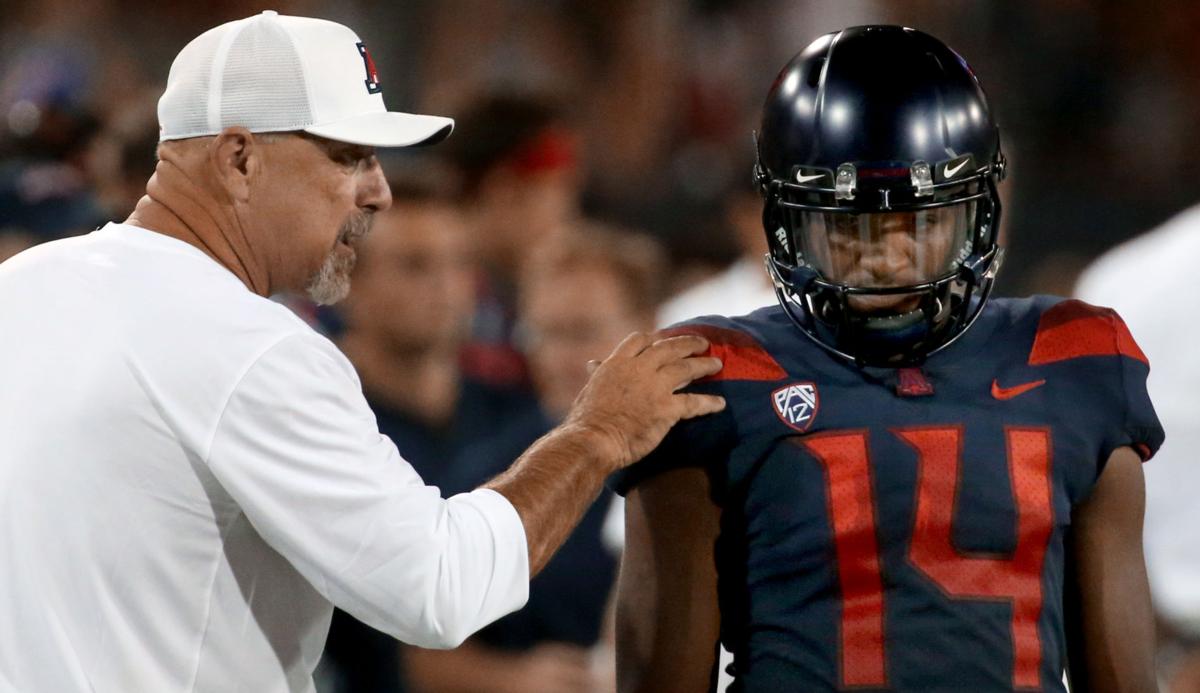Here are three things to watch in the Arizona Wildcats’ game vs. Oregon State at Reser Stadium in Corvallis (Saturday, 1 p.m., Pac-12 Networks), plus a score prediction and some pertinent preview links:
1. DONE WITH THE RUN?
The way this year has developed for UA quarterback Khalil Tate is just … weird. Before the season, Arizona starting 1-2 seemed unlikely but not impossible. Tate having 887 passing yards and six touchdowns through three games? Sure. But Tate having 40 net rushing yards and averaging 2.1 yards per carry is flat-out inconceivable. Even in what was probably the worst game of his career — that one-off start against USC in 2016 — Tate rushed for 72 yards. Tate played two series against NAU last year and had 62 yards. Yes, the scheme is different. Yes, Tate has been banged up the past two weeks. But still. He hasn’t missed a snap because of that sprained ankle, and it’s not as if dual-threat quarterbacks haven’t thrived under Noel Mazzone. Brett Hundley rushed for 1,392 yards in his final two seasons under Mazzone at UCLA. Trevor Knight rushed for 614 yards under Mazzone at Texas A&M in 2016. Tate is on pace for less than 200. He had 206 against Oregon State last year. Will that version of Tate re-emerge against the Beavers … or at any point in 2018?

The OSU ground game, led by freshman Jermar Jefferson, led the Pac-12 heading into Saturday's conference opener against Arizona.
2. INTENTIONAL GROUNDWORK
There’s no doubt that Oregon State will come out and try to run the ball. First of all, Arizona has yet to prove it consistently can stop the run. The UA yielded just 3.6 yards per carry against Southern Utah last week, but it sure felt like more. If you take out sack yardage and an end-of-half kneel-down, the Thunderbirds had 204 yards on 51 carries. That’s a 4.0-yard average — respectable, to be sure, but not what you’d expect against a middling FCS foe. Second, Oregon State has been the most effective rushing team in the conference. Led by freshman Jermar Jefferson, the Beavers are averaging 212.3 rushing yards per game — second best in the Pac-12. Their average of 5.1 yards per carry ranks No. 1. Third, running the ball regularly and effectively keeps Tate and the UA offense off the field. The Wildcats showed they could score quickly last week, and that contributed to the disparity in time of possession. But the UA defense has gotten fatigued at times, and it would be surprising if Oregon State didn’t try to exploit that.

Kevin Sumlin, left, and offensive coordinator Noel Mazzone watch a play unfold during a Wildcats win over Southern Utah.
3. IT’S NOT HOW YOU START … OR IS IT?
I can’t emphasize this enough: Arizona needs to start fast. In its first road game, at Houston, the UA came out sluggish, fell behind and never recovered. Last year’s meeting went like that for Oregon State; the Wildcats led 14-0 at the end of the first quarter, 28-0 at the end of the first half. With the exception of last year’s game at Oregon — which the UA actually led 21-14 in the second quarter — Arizona has fallen behind by double digits every time it has visited the Pacific Northwest since 2015. None of those games ended well for the Wildcats. In my game preview (link below), I explored whether Arizona’s apparent improvement last week could be believed/sustained. A quick start would provide some validation; quiet the crowd; and boost the Wildcats’ collective psyche. If Arizona wins the toss — which actually has happened each of the first three weeks — Kevin Sumlin should take the ball. Get up, stay up and force the Beavers out of their comfort zone.
FINAL SCORE: Arizona 41, Oregon State 37
PREVIEW LINKS:







